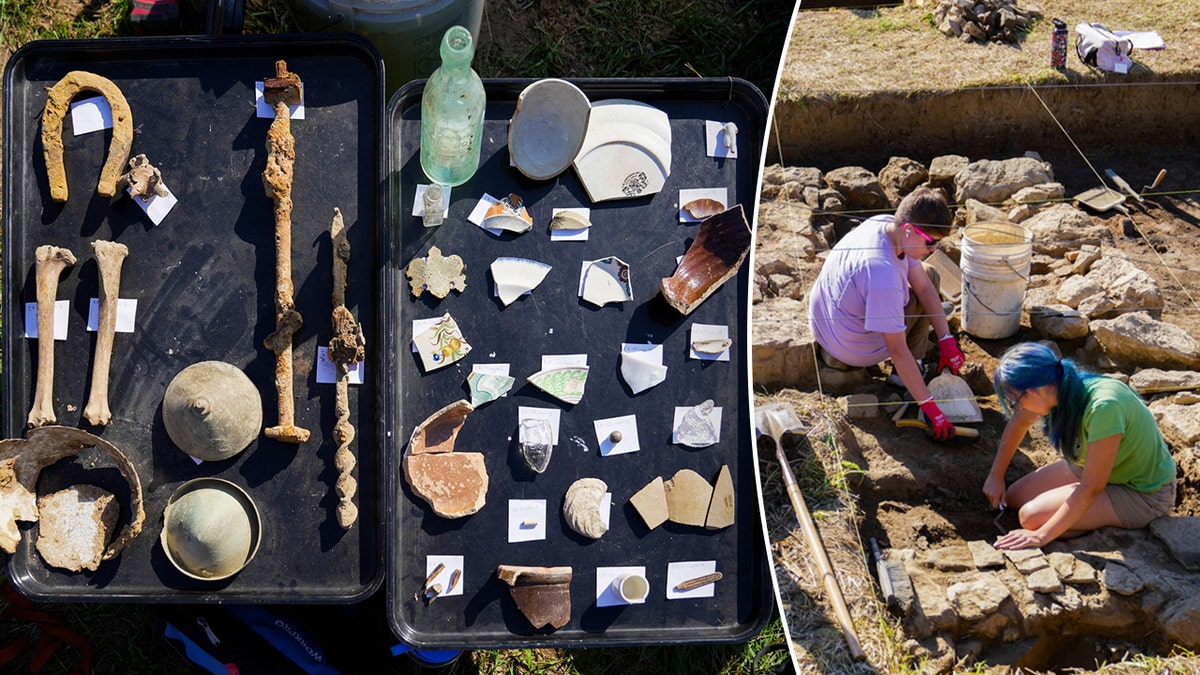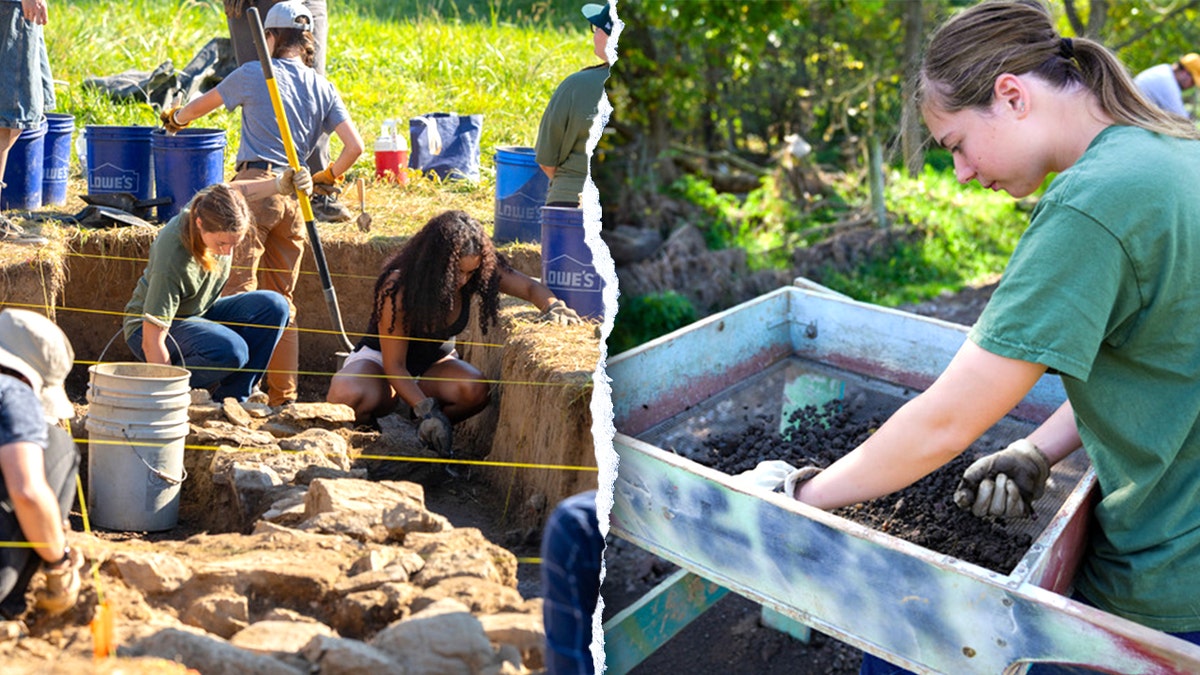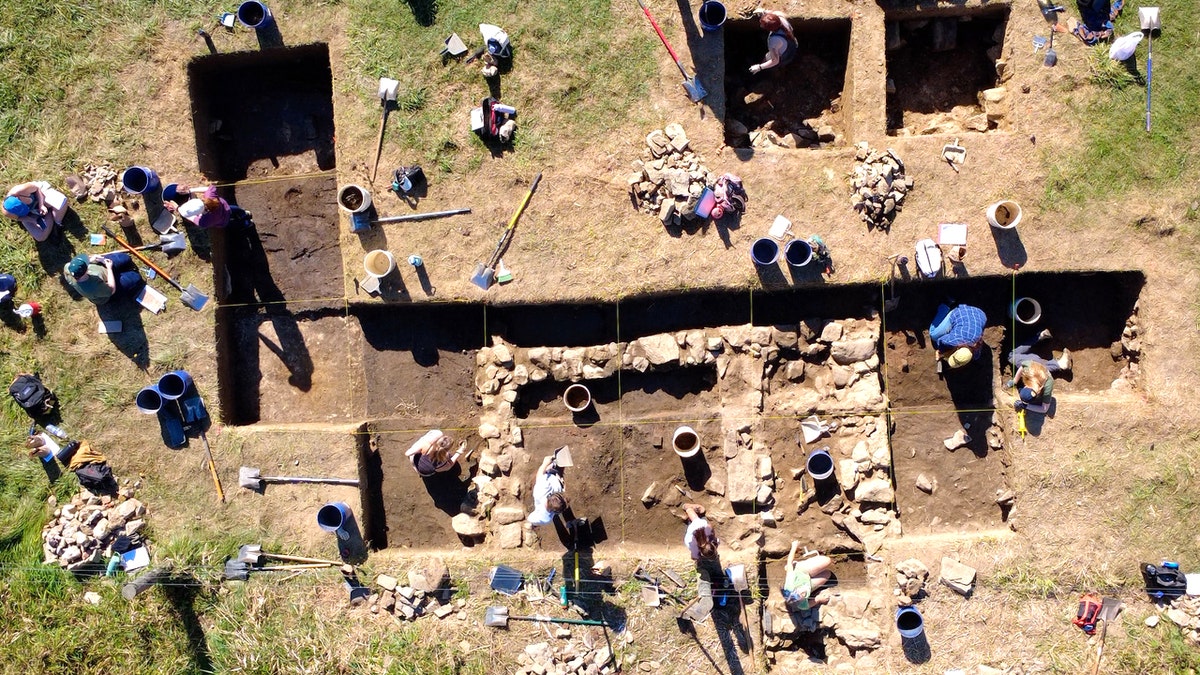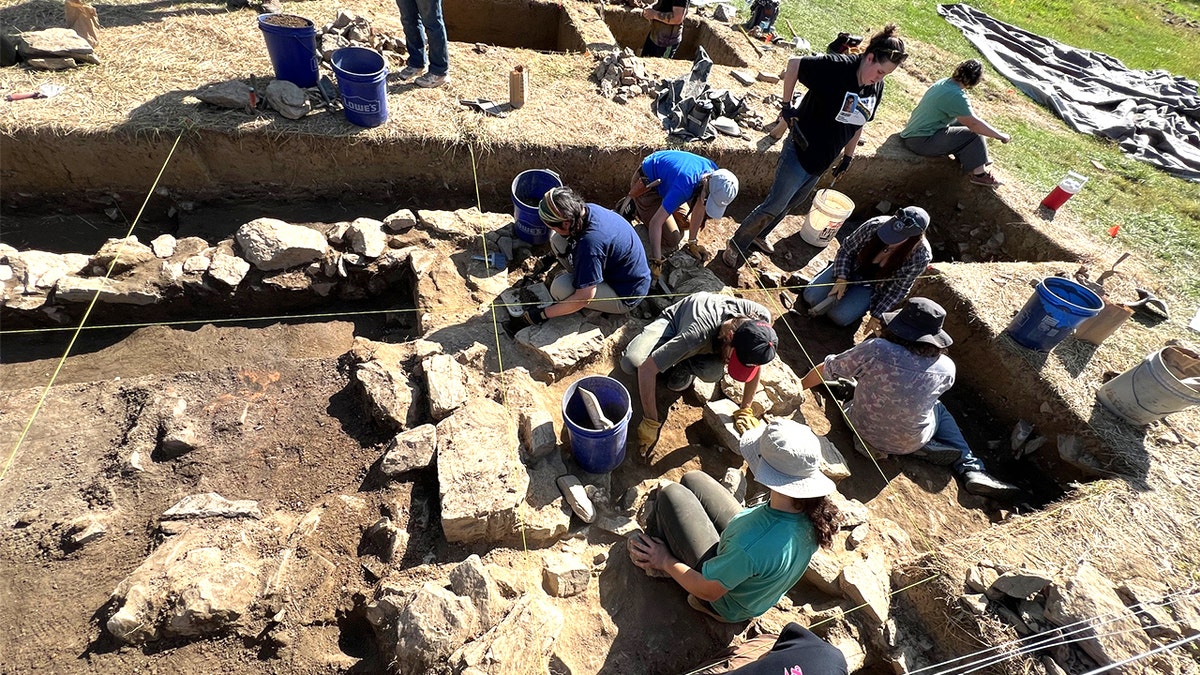NEWYou can now listen to Fox News articles!
Beneath a pasture in scenic Lancaster County, archaeologists — and archaeologists in training — recently unearthed the likely remains of the county’s oldest tavern, offering a glimpse into colonial American life.
The dig, involving students from Millersville University in Pennsylvania, has yielded thousands of artifacts this autumn.
The excavation site is located north of Marietta at what researchers believe was a tavern called the Galbraith Ordinary, built around 1725.
COUPLE STUNNED AS TUDOR-ERA TREASURE SURFACES BENEATH THEIR BACKYARD GARDEN
Timothy Trussell, an anthropology professor at Millersville University, is leading the project — and the treasures he’s uncovered reveal insight into provincial life.
Trussell told Fox News Digital the team found “an astounding number of bones and bone types” — all the probable remains of 18th- and 19th-century meals.

Archaeologists and students from Millersville University unearthed thousands of colonial-era artifacts from a Lancaster County tavern site. (Timothy Trussell / Millersville University Archaeology Program)
“Bones identified so far include cow, pig and chicken, but also deer, wild bird — likely wild turkey — and turtle,” he said.
“This is interesting, as it tells us they were augmenting the traditional ‘barnyard’ animals with wild game, something that is common in pioneer settings.”
Among the thousands of artifacts were shards of ceramics and glass, as well as personal effects like a handmade toothbrush made of bone and glass buttons.
SCIENTISTS SOLVE CENTURIES-OLD MYSTERY OF HOW EASTER ISLAND’S MASSIVE MOAI STATUES GOT THERE
“The ceramics are particularly valuable, since they are easily dated and can be used as time-markers for us to discern when in time a particular soil layer or feature was created,” he said.
Some of the ceramics date back as far as the 17th century, but Trussell placed most of them between 1750 and the 1790s.
“It is genuinely exciting to hold something in your hand and know you are the first person to touch this item in nearly three centuries.”
“This isn’t surprising, because although the tavern was built circa 1725, it was a pioneering, frontier setting in Lancaster County, so people naturally had fewer items,” he said.
“As wealth grew over time, they began buying more refined ceramics in larger numbers, and those are what we are finding.”
CLICK HERE TO SIGN UP FOR OUR LIFESTYLE NEWSLETTER
Some of the finds that surprised Trussell the most were a series of brass bells that reminded him of Christmas sleigh bells.
“The brass bells that look exactly like antique sleigh bells were especially surprising,” he said.

Students joined professional archaeologists in the field, helping identify and catalog items from Lancaster County’s colonial frontier. (Timothy Trussell / Millersville University Archaeology Program)
He added, “They likely date a bit later, sometime in the 19th century, but I have never found bells like that before. One was small, roughly the size of a quarter, while the other was quite large, just a bit smaller than a tennis ball.”
Archaeologists were also surprised by what they didn’t find. Given that smoking was a popular leisure activity at taverns, Trussell expected to find numerous clay smoking pipes — but spotted far fewer than expected.
CLICK HERE FOR MORE LIFESTYLE STORIES
“Although we’ve found some pipe fragments, it was not nearly the amount I expected,” he said.
“Perhaps the Scots-Irish patrons were not big smokers at that time.”

Excavations at the Galbraith Ordinary site shed light on how settlers dined, traded and socialized nearly 300 years ago. (Timothy Trussell / Millersville University Archaeology Program)
Each artifact is being collected, identified and added to a database — and Trussell expects the biggest discoveries to happen in a lab.
He also said the students “really love” going into the field, not just as a departure from typical classroom routines, but for the excitement of uncovering history.
TEST YOURSELF WITH OUR LATEST LIFESTYLE QUIZ
“It is genuinely exciting to hold something in your hand and know you are the first person to touch this item in nearly three centuries,” the archaeologist said. “One cannot help but wonder who last used this cup, how it was broken or what life was like for the person who used it.”
He added, “For every day we spend in the field, we create five days of laboratory work, so the process of analyzing this site is just beginning.”

“For every day we spend in the field, we create five days of laboratory work, so the process of analyzing this site is just beginning,” said Trussell. (Timothy Trussell / Millersville University Archaeology Program)
All in all, Trussell said the project is helping to recover stories lost to time — not just about life in colonial Pennsylvania, but also the trade networks that connected it to the rest of the world.
“On this site alone, we have a Scots Irish tavern owner selling food and drink to German and English settlers, serving them on plates imported from England, paying with silver coin minted in Spanish South American colonies, and serving rum from sugar plantations in the Caribbean,” said Trussell.
CLICK HERE TO GET THE FOX NEWS APP
“The story of these people happened locally, but it was intimately intertwined with a massive geographical area encompassing a complex flow of people and goods across the entire Atlantic World. … It is a fascinating story, and well worth researching!”

